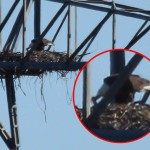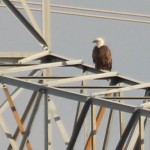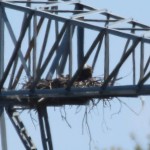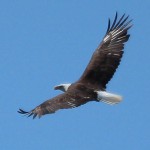NOTE: This post is part of a continuing series of observations: [ First | << Prev | Next >> ]
There was not much going on at the eagle’s nest on this visit. There were only a couple of things of note this time out. One, verification that the two eaglets were present and accounted for. Two, we witnessed the eaglets and mother eagle calling to each other. And, finally, we observed that the resident Red-tailed Hawk continues her egg incubation unabated.

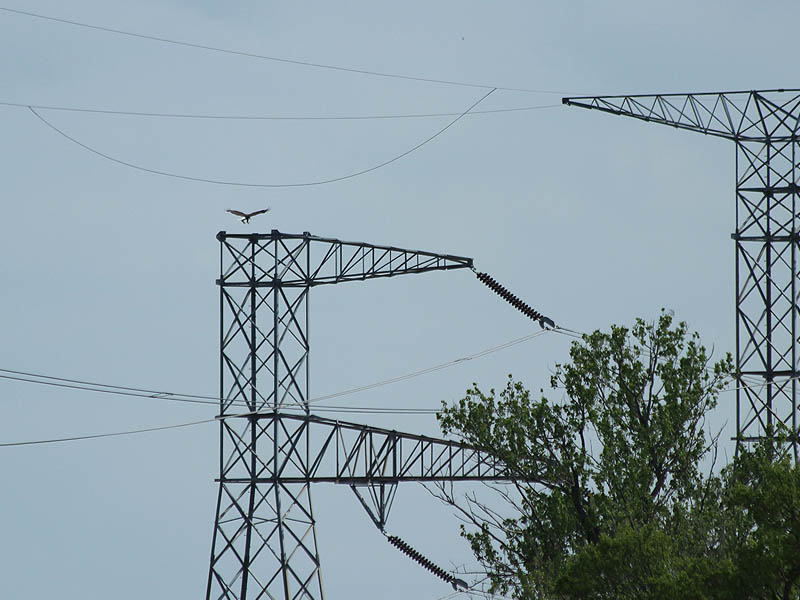

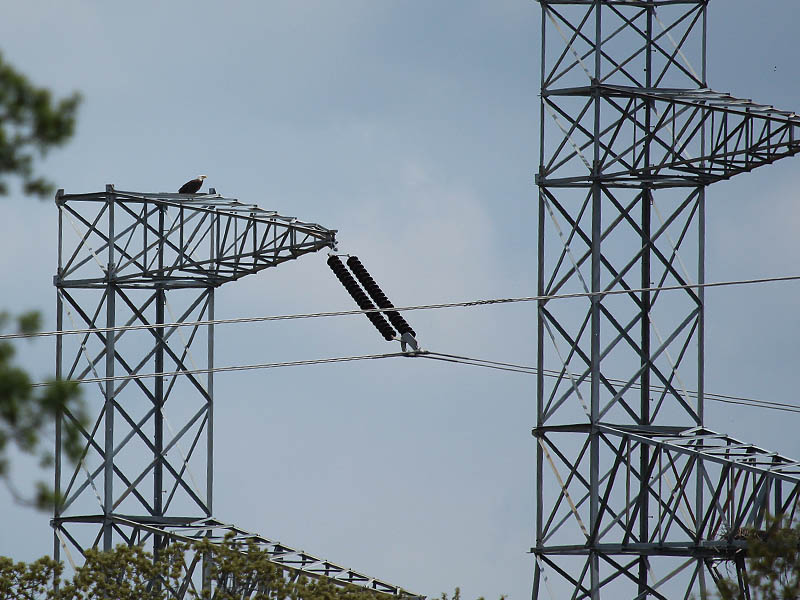
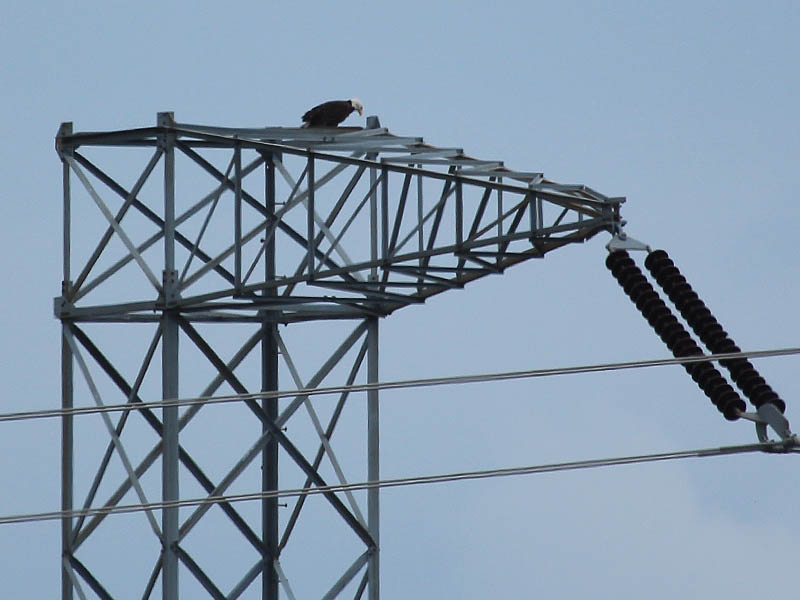
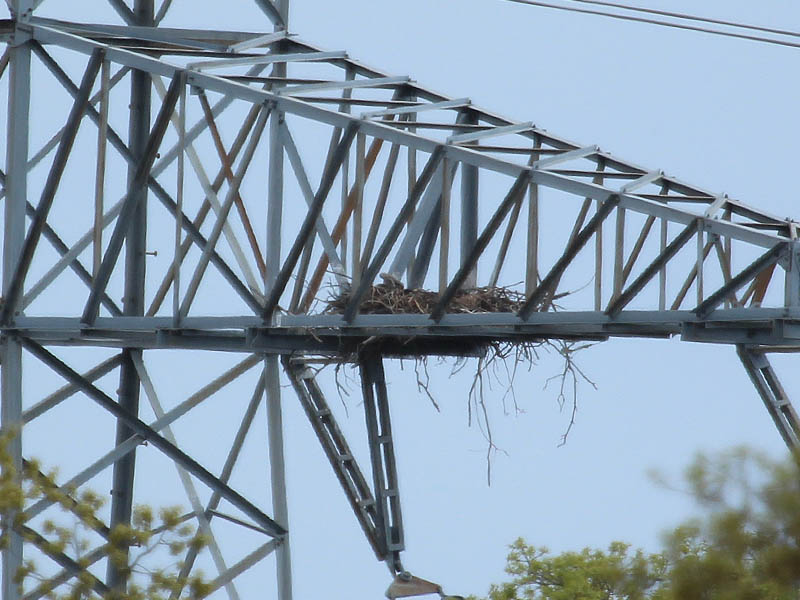

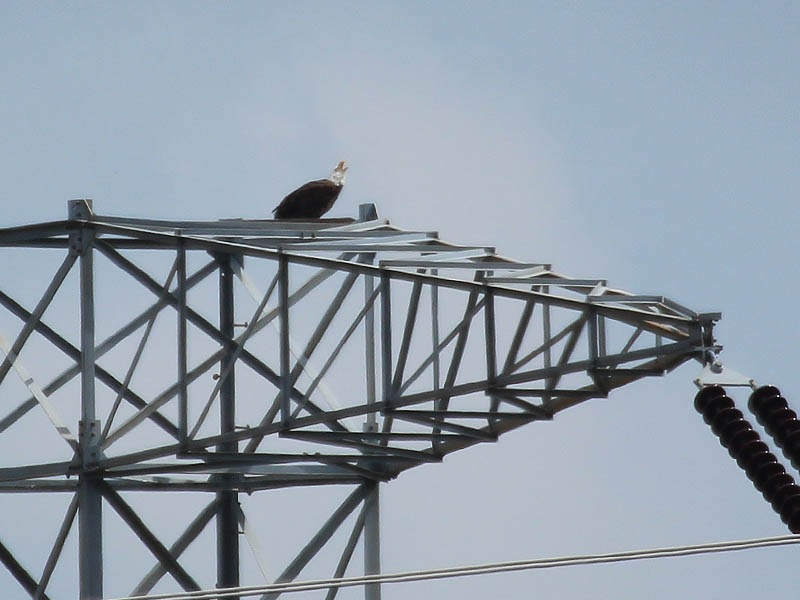

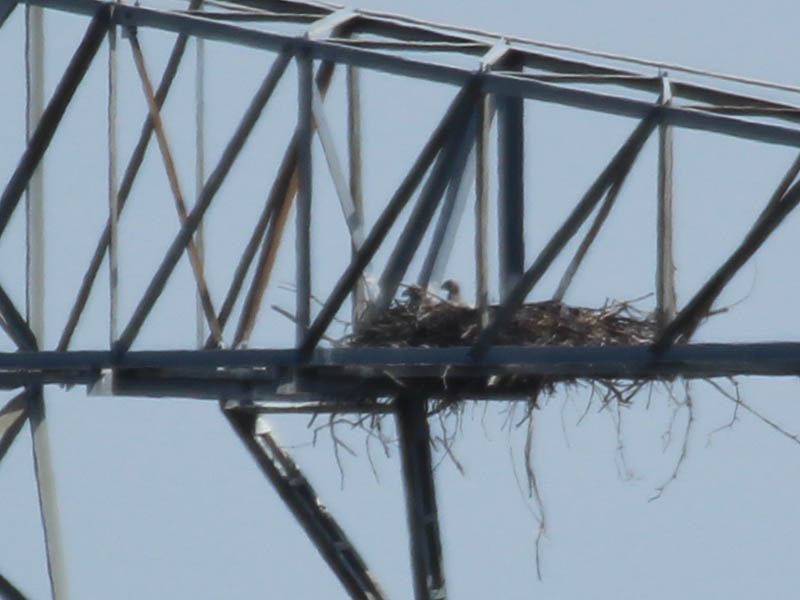
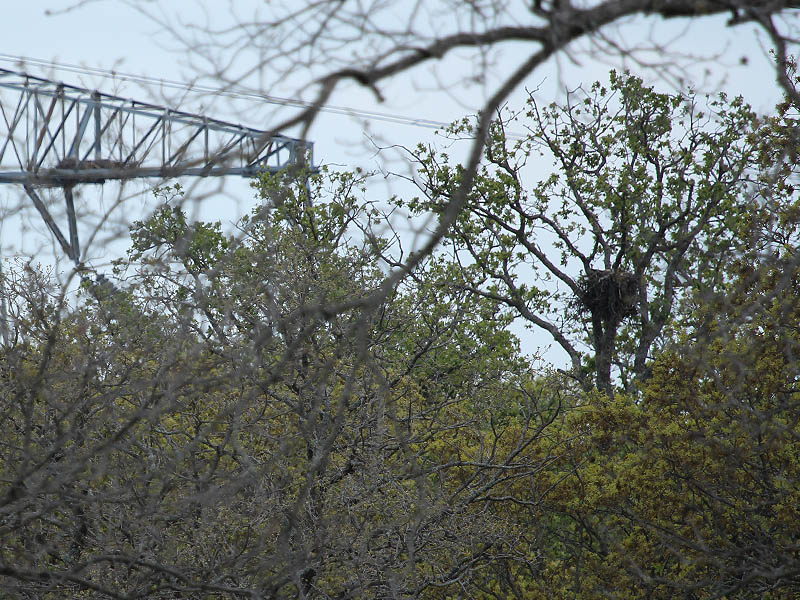
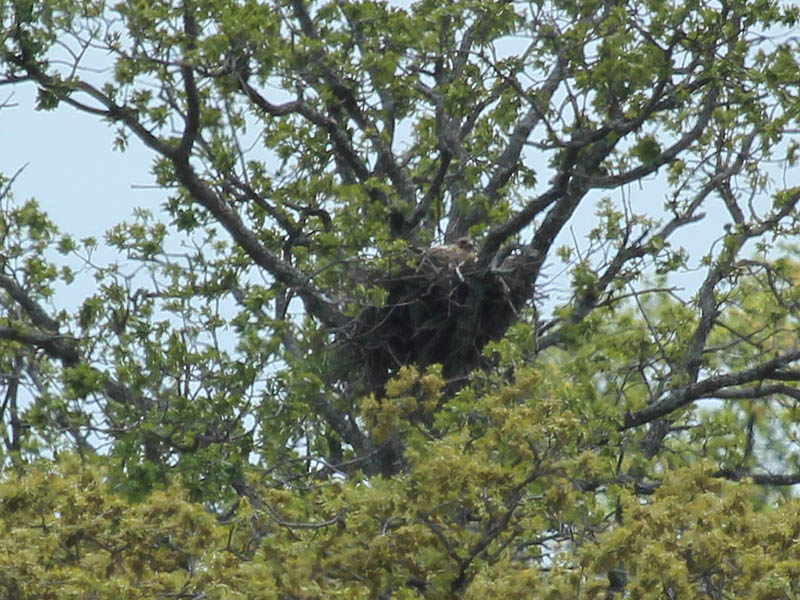
Because things were relatively quiet this time out, I would like to use this opportunity to comment on the uniqueness of this situation. This Bald Eagle’s nest is just about as special as anything I am likely to ever find as part of the work I do with for this web site. Remarkable in its proximity to a major urban center, it is in a place that most distribution maps I have seen do not even show to be within the established breeding range of Bald Eagles. In my opinion, this is a story that rivals that of Pale Male, the Manhattan Red-tailed Hawk in many important ways.
These eagles have chosen their nesting site well, even though the nest is located less than 20 miles (32 km) from the downtown portion of a major American metropolitan center. Ironically, the nest is located on a man-made structure overlooking a man-made wetland habitat.
There are a couple of things that are special the transmission tower the eagles built their nest on. Most obvious is its proximity to the wetlands and wildlife afforded by the John Bunker Sands facility and nearby East Fork of the Trinity River. Together they provide excellent habitat and abundant prey.
The nest’s tower is located in a spot that is relatively isolated. The eagles selected wisely when they built here, finding a spot where human intrusion would be minimized. But, in fact, this tower was not the eagle’s first choice. In an earlier attempt to nest in the same general area, they chose a tower a little further north—closer to US 175 and nearly adjacent to FM1389. There, the eagles may have been unnerved by the constant automobile traffic, and they soon abandoned that tower for the better option that their nest is currently built on.
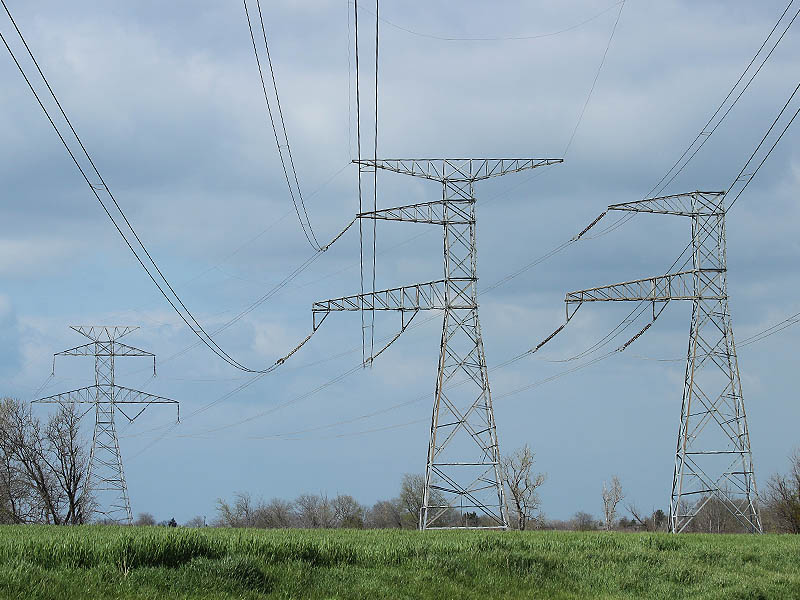
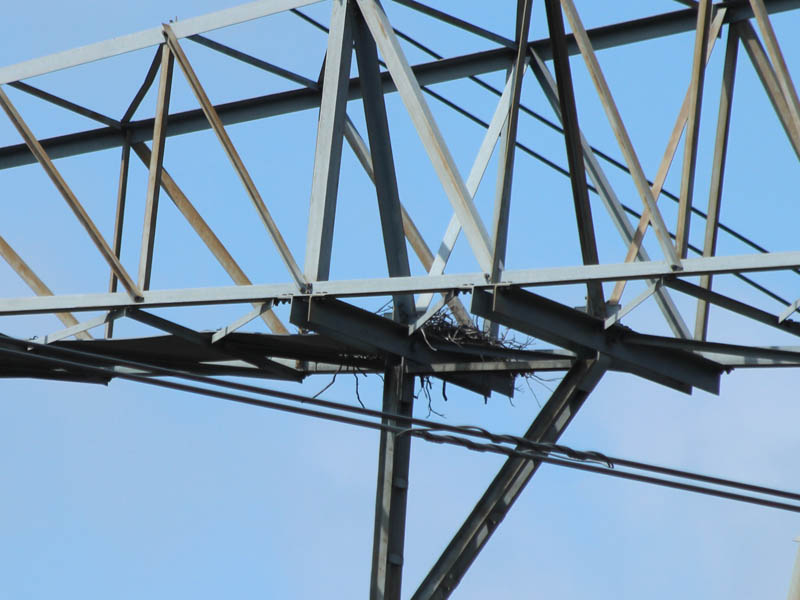
The other thing that makes this tower especially appropriate for the nesting eagles is the solid platform installed along the bottom of the transmission tower’s arm. This structure provides the support needed to maintain the integrity of the the massive eagle nest.
The platform is largely unique to the towers in this particularly system. Most transmission towers around the metroplex do not have this feature. But, many utility right of ways run through undeveloped lands and similarly excellent Bald Eagle habitat. Just think of how many of these magnificent birds the Dallas/Fort Worth area could support if similar platforms were installed in appropriate locations across the metroplex and around the countryside.
NOTE: This post is part of a continuing series of observations: [ First | << Prev | Next >> ]


